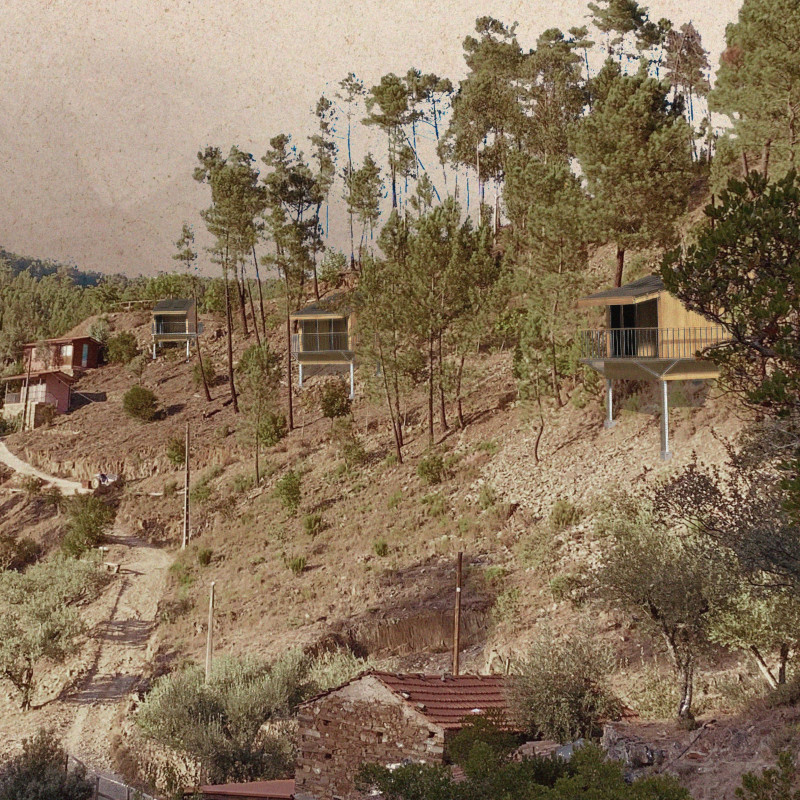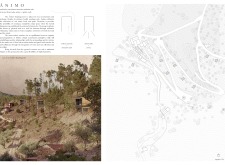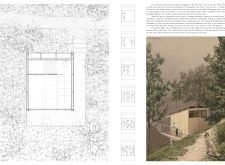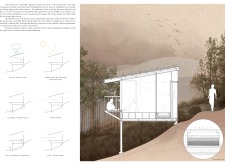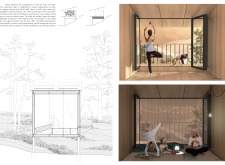5 key facts about this project
The Ânimo sleeping pod is designed as a place for rest, reconnection, and mental refreshment. Located in a natural setting, it serves as a retreat from everyday demands, helping individuals find balance between body and mind. The overall design focuses on creating a space that encourages immersion and meditation, promoting well-being for its users.
Spatial Organization
The layout of the sleeping pod consists of several distinct areas that enhance the experience of visitors. It includes a porch for entry, areas dedicated to sleeping and meditation, a bathroom, and a technical space that supports its self-sufficient features. This arrangement not only prioritizes comfort but also ensures privacy. Visitors are welcomed by a path of stone steps leading to a wooden porch, which transitions smoothly from the outdoor environment.
Functional Flexibility
The sleeping area is adaptable, allowing for different arrangements based on the needs of guests. With no fixed layouts, this space can accommodate varying numbers of people comfortably. Additionally, under-floor storage helps maintain organization, creating a clear environment conducive to personal reflection. The provision of an external water supply alongside the bathroom further emphasizes a connection to nature, making it easy for users to enjoy outdoor activities.
Sustainability and Materiality
Sustainability drives the design of the sleeping pod, reflected in the incorporation of systems for collecting rainwater and generating solar energy. It uses local oak wood for timber and panels, keeping the ecological impact low. A steel frame provides necessary support, ensuring a durable structure. The roof is angled to maximize rainwater collection and daylit spaces, while a greywater filtration system promotes efficient water use and environmental care.
Connection with Nature
A significant aspect of the design is a large opening that faces the valley, merging the interior with the landscape outside. This feature allows natural light to fill the space while maintaining the privacy of users. The design enhances the experience by inviting occupants to appreciate the view. It encourages a sense of calm, allowing for reflection and connection with the surrounding environment while being enveloped in a comforting space.


